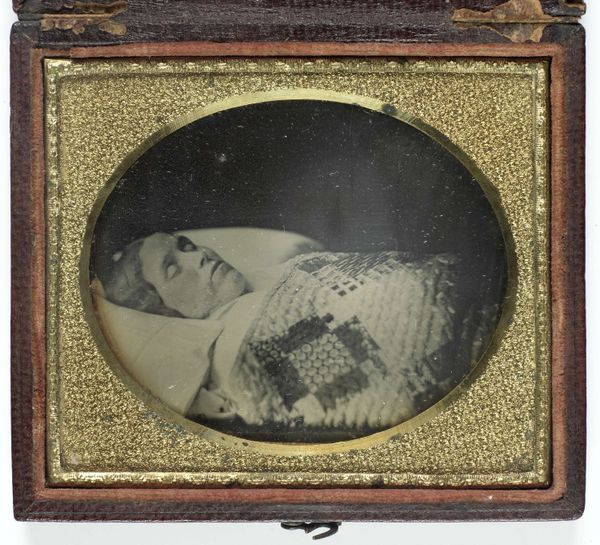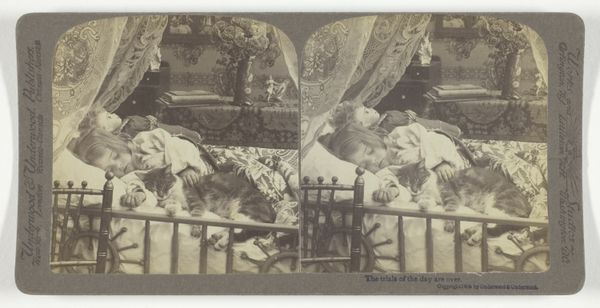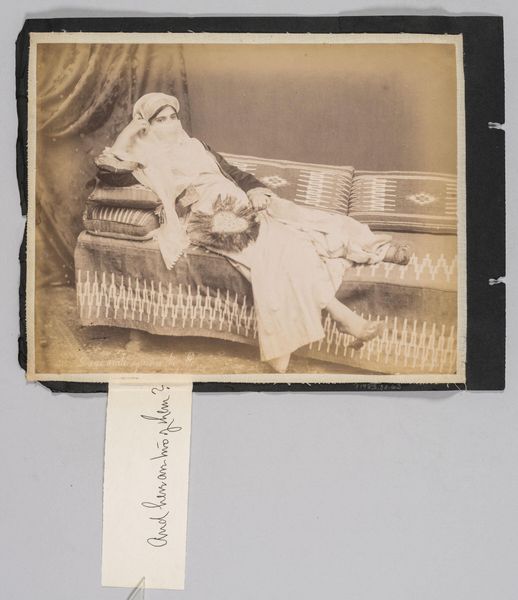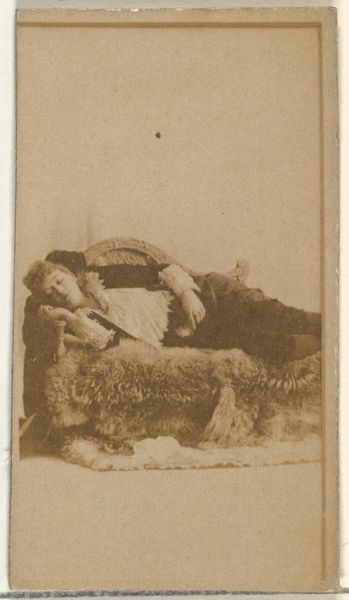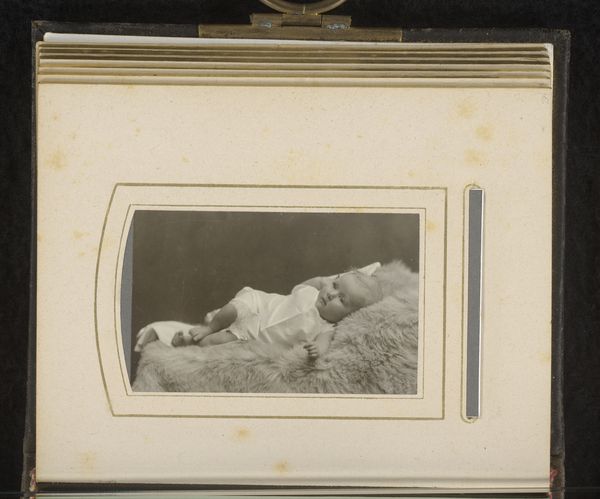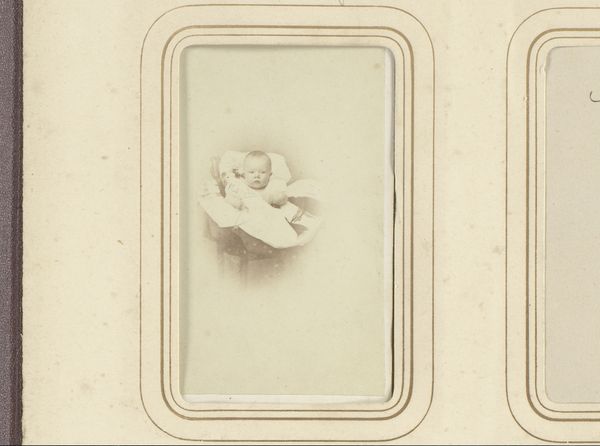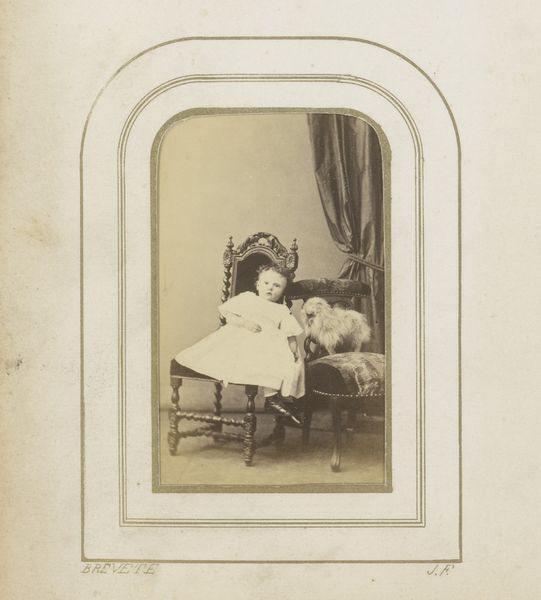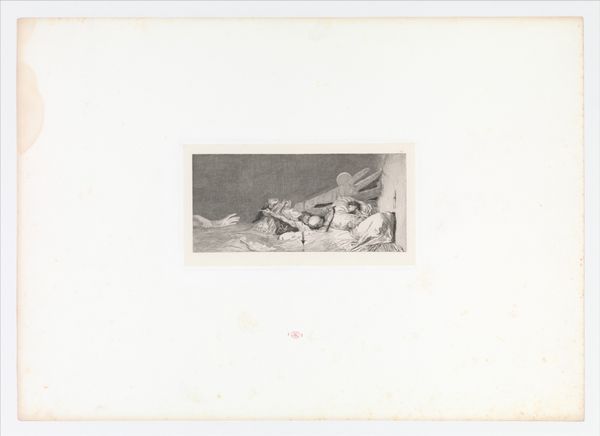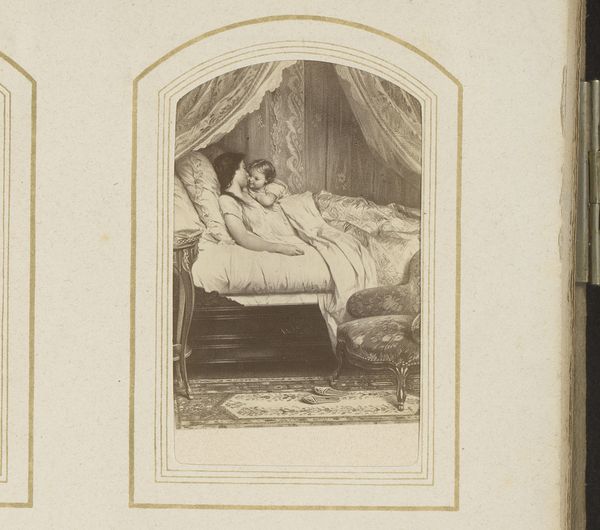
photography, gelatin-silver-print
#
portrait
#
photography
#
gelatin-silver-print
#
realism
Dimensions: height 103 mm, width 63 mm
Copyright: Rijks Museum: Open Domain
Editor: Here we have a gelatin silver print, likely from somewhere between 1871 and 1890, entitled "Portrait of an Unknown Baby," attributed to Petz & Co. It's a simple oval portrait, a tiny baby reclined against a light pillow or blanket. The overall effect is strangely... haunting. What do you see in this piece? Curator: What strikes me is how this type of portrait participated in the burgeoning market for photographic portraiture. Before photography, painted portraits were status symbols reserved for the wealthy. Suddenly, representations like these made it possible for middle-class families to partake in the same forms of commemoration. Editor: That’s interesting, so you're saying that what seems so simple, the creation of this artwork, was also representative of a profound shift in class accessibility to art? Curator: Precisely! How often did working-class people have images made and disseminated before photography became ubiquitous? Consider also the societal emphasis placed on family and lineage at the time; these portraits, mass-produced or not, became vital family heirlooms and status symbols. Editor: I hadn’t thought about the studio's role in distributing the photo to a wider audience or creating more. Curator: Indeed, and the studios profited from this explosion of desire, often dictating stylistic conventions that were adopted on a broad scale. You can see it even in this 'unknown' baby portrait. Did the name Petz & Co become synonymous with something other than providing accessible photos? Editor: Wow, it changes how you look at a seemingly quaint portrait! I definitely came away with a broader understanding of art and cultural class.
Comments
No comments
Be the first to comment and join the conversation on the ultimate creative platform.
